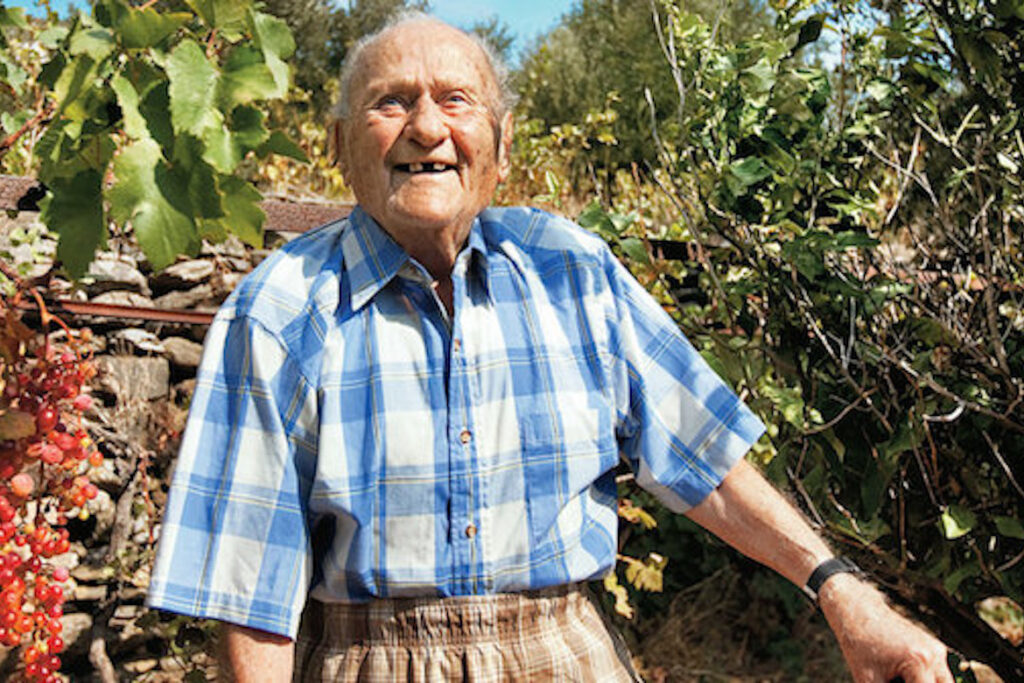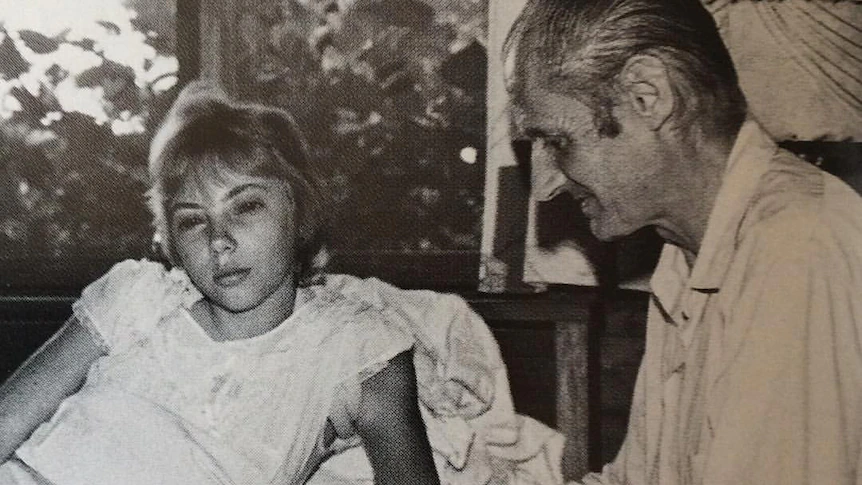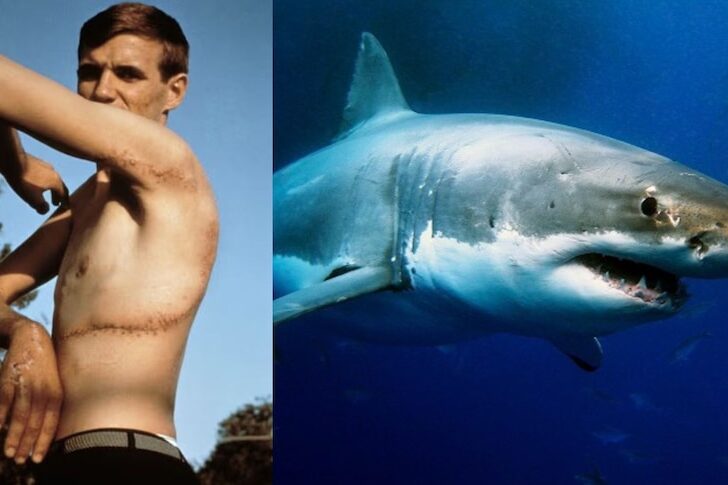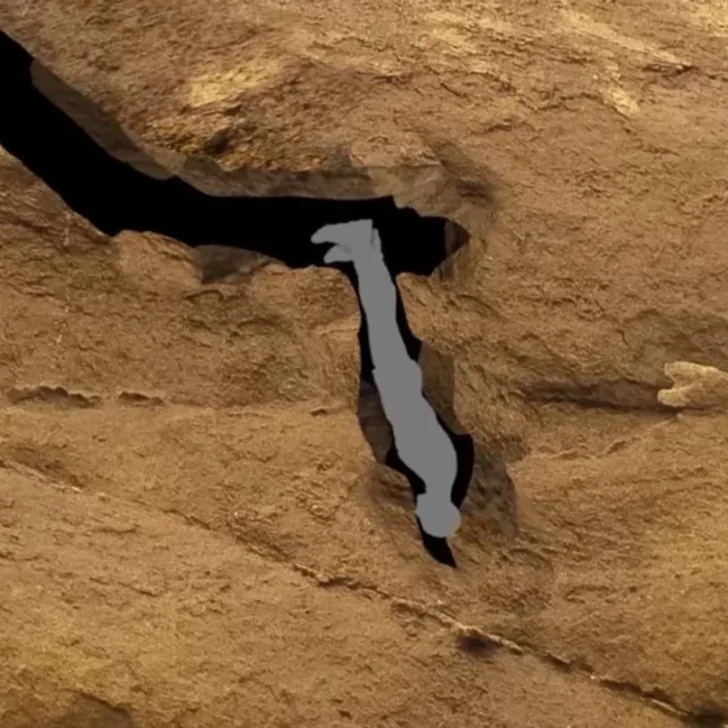Benjamin Franklin coined the famous phrase, “In this world, nothing is certain except death and taxes.” Sadly, death looms over us as a fate that spares no one.
However, amidst the bleakness of that fact is a handful of people who did the impossible: they cheated death.
Many of these stories are the stuff of nightmares: a chilling tale of a woman who jumped from a plane only for her parachute to fail.
Or, in one particularly unbelievable case, the story of a man who survived not one but two atomic bombs. Then, there’s the remarkable tale of a woman who survived being frozen—for six hours.
These stories sound too unbelievable to be true, but they are certainly no fictional tales or fables; they are true accounts of real people who evaded the Grim Reaper.
Here are seven survival stories of people who were supposed to die—but didn’t.
1. Jordan Hatmaker: Survived A Skydiving Accident


Jordan Hatmaker knew she was in trouble. The parachute was tightly wrapped around her leg as she hurtled through the sky to the unforgiving ground below. All she could do was prepare to crash.
It was November 14, 2021, and Jordan was getting ready to do yet another skydive. By no means was she an expert in the sport, but she’d completed over a dozen successful jumps before. This skydive certainly wouldn’t end like the ones before, though.
A lover of all things extreme, Jordan headed to the hangar with her brother and two dogs, excited to dive. Her brother ominously warned her not to do the jump that day, saying something felt “off.” Jordan brushed his trepidation off and went ahead with the planned dive.
She was not yet able to skydive solo—she had ten more jumps to do until she got to that point—so she would jump with her coach. In the plane, the pair jumped out, 4,100 meters above ground.
The duo would freefall, seeing them drop hundreds of meters every few seconds. They were traveling 200 kilometers an hour, with whirls of air carrying the skydivers to their agreed-upon final destination on land. As Jordan says, she felt “invincible.”
Perhaps she was right.
Then, she and her coach tracked away from one another to avoid their parachutes colliding. However, Jordan suddenly realized she was lower than she’d first anticipated. She panicked slightly and rushed to deploy the parachute.
However, instead of jerking her upward and slowing the pace of the fall, the pilot chute wrapped around her right leg. The main parachute was still inside the bag.
Instead of opening the reserve parachute, Jordan tried untangling the one wrapped around her leg. She even attempted to remove her shoes but struggled because she double-knotted them.
The ground was in focus for Jordan by this point. She braced for a painful—quite likely deadly—landing.
Suddenly, the main chute somehow slid from the bag and inflated. This gave Jordan some much-needed relief as she steered toward a grassy area for the unconventional landing. However, things would take a turn for the worse.
The pilot and main chute had begun pulling in opposite directions, causing Jordan to accelerate. Even faster than before, she hurtled to the ground. After an almighty crash landing, she awoke on the grass in burning pain. All she could do was scream.
She tried to will herself to get up. She couldn’t. She prayed she wasn’t paralyzed.
Five minutes later—although it felt much longer for Jordan—help arrived. They called the paramedics, who arrived within the hour. They gave her ketamine to help her deal with the pain, and she was airlifted to hospital.
Although Jordan didn’t die, she certainly didn’t come out of the ordeal unscathed: she suffered a spinal injury that resulted in a fluid leak, which had the possibility of leading to meningitis. She’d broken her shin, completely shattered her ankle, and was paralyzed from the waist down.
When she asked the doctors if she’d ever walk again, none of them could give her a straight answer.
Still, three months after the accident, she defied expectations and began walking again. Since then, she’s even climbed Mount Everest base camp.
Not only that, but Jordan fully intends on skydiving again in the future.
2. Stamatis Moraitis: Survived Terminal Cancer Diagnosis

Stamatis Moraitis jokes that he “forgot to die.”
That’s an understated way to say he survived a terminal cancer diagnosis for four decades.
Born in 1915 or thereabouts—Stamatis insisted he was born in 1911, but his official documents state 1915—he was from the Greek island of Ikaria. In the early 40s, he immigrated to the USA.
Despite working hard and living the “American Dream,” when Stamatis was given a terminal cancer diagnosis in the 70s, he couldn’t afford a funeral.
With him being given six months to live (nine, at a push), he didn’t have much time to get the funds together. Plus, he wanted to be buried with his ancestors. So, he headed back to Ikaria to live out his final months. Or, so he thought.
He moved in with his mother and father, who tended to his needs. Stamatis spent his days in bed for a while, awaiting the illness to take over. But it didn’t.
Since Stamatis had rejected medicine and chemotherapy, he had no choice but to live as best he could with the time he had left.
He began to spend a lot of time in nature and out in the sun, and his routine evolved into drinking two to three cups of homemade wine daily and tending to his garden. Stamatis was surrounded by his friends and family, who were all aware of the tragic diagnosis but in awe of his zest for life.
Six months passed, and miraculously, Stamatis was still alive. Then, nine months. Then years passed, and Stamatis was looking healthier than ever. Years compounded into decades, and Stamatis hadn’t had anything close to treatment for his incurable lung cancer.
His medicine was simply wine, spending hours every day talking to friends, going to his vegetable patch, and basking in the sunshine.
In fact, Stamatis would outlive the very doctors who gave him the terminal diagnosis.
Still, death comes to us all. In February 2013, he passed away—aged either 98 or 102, depending on who you ask—although not from cancer. It seems old age had caught up with Stamatis, and he passed away peacefully, over 40 years after he was supposed to die.
Stamatis’ unbelievable story brought much attention to the island of Ikaria, where he was brought up and spent most of his life. It was found that it wasn’t unusual for its residents to live up to and over 100 years old.
It has been suspected that the ocean air, plentiful sunshine, and ailment-eliminating hot springs have a lot to do with the wellness of Ikaria’s inhabitants.
3. Jean Hilliard: Survived Being Frozen For Six Hours

Jean Hilliard was described as being “completely solid, just like a piece of meat out of a deep freeze” by one of the doctors who treated her.
She’d been frozen solid for six hours, and the prognosis wasn’t good. It looked like Jean was going to die, but by some miracle, she endured being frozen and thawed, living to tell the fascinating tale.
Jean lived in Lengby, Minnesota, which has been known to have extremely cold winters. In December 1980, the weather had turned especially cold, -30 Celsius, so Jean had been sure to wrap up warm. She wore mittens, hardy boots, and a warm coat while enjoying time out with her friends.
On her drive home that evening, she skidded on some ice and found herself in the ditch. She wasn’t hurt, but couldn’t move the car.
So, she embarked on the walk back to her friend’s home for some help. It wasn’t too far away, though the weather would have made the walk unpleasant.
However, once Jean was almost at her friend’s house, she slipped over on the ice and knocked herself out.
She was mere feet away from safety—and a few short steps from her night ending much differently than it did. She lay undiscovered in the freezing temperatures for six hours. By this point, her whole body had frozen.
Wally Nelson, the friend’s house she’d almost got to before she slipped, was leaving his house the following morning and noticed Jean lying motionless. She was “froze stiffer than a board,” he would recall.
He immediately pulled her into the porch and noticed a few bubbles emanating from her nose. Despite the odds, she was alive—just. Wally rushed her to nearby Fosston Hospital, where doctors believed Jean was a lost cause despite the occasional bubbles coming out of her nose.
Her heartbeat was just 12 beats a minute, and her temperature was lower than the thermometer could measure.
When they tried to insert the IV cannula, they were met with a problem: her arm was frozen. There was no way to get the needle into her vein. The hospital staff broke several needles, trying to no avail. They decided their best bet was to thaw her.
So, doctors instructed that Jean was to be covered in heat pads. The quicker they warmed her up, the quicker they could insert the IV.
It took a few hours, but eventually, Jean began to stir. Before midday, Jean was moving, albeit twitching and jerking from the ordeal her body had endured.
Not only had Jean survived being frozen, but her body was steadily returning to its normal state. Her extremities took a bit longer to come around; her toes, especially, were numb for some time.
Jean was quickly talking again, and her mental state showed no signs of having any impact from the accident. She was coherent and fully remembered everything leading up to slipping on the ice.
Recovery was quick for Jean, and since that fateful December night, she has suffered no lasting physical ailments from her six hours frozen solid.
Jean currently resides in Cambridge, Minnesota, which has harsh winter weather. Still, she’s learned her lesson: she won’t drive on icy roads at night.
4. Joan Murray: Survived A Skydiving Accident

This is another survival story about a skydiver with a malfunctioning parachute. Although faulty parachutes seem to be a theme in these stories, it’s important to note that the average injury rate is just 0.3 injuries out of every 1000.
However, when injuries do occur in skydiving accidents, the individual rarely survives. 47-year-old Joan Murray was one of the very few whose parachute didn’t open, yet she lived to tell the terrifying tale.
Joan was heavily into extreme sports, in particular, skydiving. She was no stranger to the sport, having completed an impressive 35 dives. On September 25, 1999, the mother of two headed to the hangar in South Carolina to participate in another jump. It was like second nature to her now.
She dived out of the plane, but when it was time to open the parachute, it didn’t open. If you fall (or dive, in this case) from a height of 80 feet and above, the mortality rate is 100%.
Joan knew she needed to think fast. She did her best to keep her composure and pulled for the reserve parachute to open. Thankfully, it did, only to get tangled, rendering it just about useless.
The ground was getting closer and closer, and it was inevitable that Joan would hit it with a thud. The sinking realization that she was unlikely to make it out of this alive hit her just before she crashed to the floor.
A free fall from 14,500 feet to the ground is unsurvivable. But Joan was still breathing—thanks to some fire ants.
By a stroke of good luck, she’d fallen directly on top of a mound of red ants. This would have been unfortunate for Joan in any other situation, but the ants proved critical in keeping her alive.
Red ants are known to attack if they’re disturbed, and that’s just what they did: they constantly stung Joan repeatedly with their poisonous stings. The persistent stings pumped adrenaline into Joan as she lay among them, keeping her from succumbing to her serious injuries from the fall.
The medical team rushed to Joan and quickly got her to the hospital. The extent of her injuries meant she had to be put in a coma.
The majority of her bones were broken, her teeth had been badly damaged, and she had more than 200 fire ant stings on her body. The human body simply can’t withstand that amount of pain.
Joan would endure 20 reconstructive surgeries and just about as many blood transfusions. But she was still alive despite the odds.
As with fellow skydiving survivor Jordan Hatmaker, Joan would go on to make a full recovery.
Unbelievably, she would also go on to complete more skydives.
Sadly, in the wake of her accident in 1999, Joan was later diagnosed with cancer. She passed away in 2022, aged 70.
Before she passed, Joan would say, “Sometimes we take life for granted. But I truly have fun putting my shoes on in the morning.”
5. Juliane Koepcke: Survived A Plane Crash

Plane crashes are the stuff of nightmares. Imagine the plane you’re traveling on suddenly breaks apart, and you’re stuck in your seat, flying through the air. That’s exactly what happened to 17-year-old Juliane Koepcke.
Juliane and her mother, zoologist Maria Koepcke, boarded LANSA Flight 508 in Lima, Peru, on Christmas Eve 1971. They were headed to meet with Hans-Wilhelm, Juliane’s father and fellow zoologist, at the Panguana research station the family had founded three years earlier.
The mother and daughter wouldn’t make it there.
On the way, the plane was struck by lightning, resulting in it crumbling to pieces as it hurtled through the sky.
Juliane was still strapped into her seat when the plane broke apart around her, causing the terrified teenager to fall 10,000 feet.
All she could hear was the whistling of the wind as she careened helplessly to the ground. The closer she got to land, Juliane blacked out, thankfully. She eventually crashed into the Amazon jungle.
By some miracle, Juliane survived the impact. She woke up alone, and her first thought was to try to find her mother. She freed herself from the seat she was still strapped into and began scouring the wreckage.
However, Juliane quickly discovered that she was likely the sole survivor of the 92 passengers aboard.
Juliane was by herself in the dangerous Amazon rainforest. She had a broken collarbone and several nasty cuts and injuries, so her survival chances weren’t looking good.
One thing Juliane did have going for her was her knowledge of certain animals, thanks to her zoologist parents. She knew she was in dangerous territory, where snakes camouflaged themselves as plants and predators watched her from the trees.
All she ate during her time in the rainforest was candy she’d foraged from the plane. By day 10, Juliane was becoming delirious. She drifted along the river’s edge when she spotted a shelter with a palm leaf roof. She thought she was hallucinating. She wasn’t—it was really there.
Juliane made her way in and discovered a can of petrol. Years ago, she’d watched her father pour petrol on one of the family dog’s injuries to rid it of maggots. Juliane was struggling with the same problem: a nasty injury that had become infested with maggots.
So, just like her dad did, she poured the petrol onto her wound.
After almost 11 days of wandering the rainforest alone with no resources, an exhausted Juliane finally fell asleep in the shelter. The next day, she was awoken by the voices of Peruvian forest workers, and as she would later say, “It was like hearing the voices of angels.”
The workers were stunned to see a teenager with horrific injuries, a torn dress, wearing only one shoe standing before them. They saw she needed urgent medical care and took her via canoe to a nearby village. From there, she was airlifted to the hospital.
Juliane got the medical care she needed while her father was contacted with the tragic news. Though he was undoubtedly relieved his daughter had survived, he had to deal with the heartbreaking reality that his wife had more than likely died in the accident.
Once Juliane’s injuries had somewhat healed and she was in better physical condition, she aided search parties in finding all of the passenger’s bodies from the crash site.
Tragically, Juliane would discover a haunting fact once the bodies were recovered: that her mother, too, had survived the crash. Because she couldn’t move, she died days after the accident. Juliane has since said she dreads to think what her mother’s final days were like.
Juliane’s passion and interest in nature weren’t quelled by her time in the rainforest. In fact, she would go on to become the director of Panguana, the research station that her parents had founded. She has since written a book about her ordeal, “When I Fell From the Sky.”
6. Harrison Okene: Survived 60 Hours Underwater In Darkness

The idea of being buried 100 feet beneath the ocean’s surface with a minute, rapidly decreasing amount of air is nightmare fuel. For Harrison Okene, it was his reality.
The 29-year-old boat cook from Nigeria was asleep aboard the vessel he worked on, the AHT Jascon-4. He got up to use the bathroom in the early hours of May 26, 2013.
As he did, he noticed the floor was unsteady. The boat’s motion suggested the water beneath it was choppy. Suddenly, the boat was flung violently, causing it to capsize.
Even today, nobody knows what caused the boat to tip over the way it did. The power of the ocean had ensured all aboard the boat died, except for Harrison.
Harrison was flung from the bathroom as the ship overturned, and water quickly filled the vessel. The flooding swept him to the bowels of the ship, after which he took shelter in a cabin bathroom.
With the ship now steady on the ocean floor, water eventually stopped pouring in. Harrison found himself confined in the tiny bathroom with no resources, no light, and a tiny amount of air.
Hours passed, and Harrison had no choice but to remain where he was. He knew the oxygen would soon run out; he just didn’t know when. His entire body, except his head and shoulders, was engulfed in the freezing water.
Rescue felt unlikely since the accident was unsurvivable.
The hours rolled into days. All Harrison had were his thoughts to keep him company.
By now, the boat had released a mayday call, but the water had initially been too dangerous to carry out a search. Once it had calmed, a rescue team was sent to Jascon-4, banging on the vessel’s side to see if anybody banged back. Harrison did—but nobody heard him.
The rescue mission was called off because there were no signs of survivors. It looked like Harrison’s fate was sealed.
Then, a salvage team was assembled to bring back the dead bodies of the crew. When they headed down, they were shocked to find a terrified-looking Harrison locked in a bathroom with water just about engulfing his entire body.
For almost three days, he’d been trapped in a confined space, thinking he was going to die. He had all but accepted his fate. He was relieved to see the salvage team but was unsure if he was hallucinating.
He soon realized he wasn’t.
However, the rescue wasn’t as simple as bringing Harrison back up to land. He’d been in the water for 60 hours by this point, meaning if they moved him, the pressure may kill him. He was kept in a decompression chamber for three days until he was deemed safe to return to normality.
Harrison Okene would recover without any adverse effects. Despite his ordeal, Harrison doesn’t fear the ocean. Even after his terrifying, claustrophobic ordeal on the ocean floor, he went on to become a diver.
7. Tsutomu Yamaguchi: Survived An Atomic Bomb. Then, He Survived Another One

Surviving an atomic bomb if you’re in the hypocenter at the time of the attack has dire rates: you have an 80-100% chance of dying. To survive one atomic bomb is extremely rare. To endure two and live to tell the tale is impossible. Well, almost impossible: Tsutomu Yamaguchi can attest to that.
Tsutomu was less than two miles from two separate blast zones in the Hiroshima and Nagasaki bombings in 1945. He survived the one on August 6 with severe injuries. The one on August 9 almost killed him—almost.
He was in Hiroshima on a business trip when the city was bombed by the B-29 bomber Enola Gay. The blast flung him to a muddy area, where he awoke to find everything around him ablaze.
He was surrounded by bodies and people close to death in agonizing pain. By some miracle, he could still walk. He made his way through the corpses in the roads, through the burning rubble and falling debris to a train station. Luckily, the service was still on to help get victims out of the city.
Unimaginably, Tsutomu only rested at home with his wife and children for a day before returning to work on August 9.
Even more unbelievable was that his boss scolded him for lying about his experience with the atomic bomb. His employer made it clear he didn’t believe Tsutomu despite the bloodied bandages that covered his face and arms.
Then, in a stroke of cruel irony, another atomic bomb would drop where they were situated in Nagasaki.
Tsutomu’s boss was flung across the room, the shattering glass engulfing him. Tsutomu took cover, knowing what was about to come. By some miracle, he’d survived another atomic bomb. He made it home to his family, where they sought refuge in a shelter.
In the weeks after the attack, it was uncertain whether Tsutomu would survive. His burns were extreme, and the radiation poisoning caused a lot of nasty side effects.
Still, despite the odds stacked against him, Tsutomu pulled through, fully recovering.
He would live until the age of 93, succumbing to stomach cancer. He is remembered as the “twice bombed man,” and he is the only person to have been officially recognized by the Japanese government as surviving both atomic bombs.
The men and women in these seven cases all endured terrifying encounters with death, yet each one would come out of the other side with a renewed appreciation for life.
These tales remind us just how fragile human life is but also show us just how resilient human beings are, even in the most extreme and unimaginable circumstances.
Sources
https://pappaspost.com/remembering-stamatis-moraitis-man-who-almost-forgot-die
https://www.sciencealert.com/amazing-true-story-the-woman-who-survived-being-frozen-solid
https://www.brantfordexpositor.ca/opinion/columnists/free-fall-and-fire-ants
https://www.bbc.co.uk/news/magazine-17476615
https://www.history.com/news/the-man-who-survived-two-atomic-bombs













Leave a comment